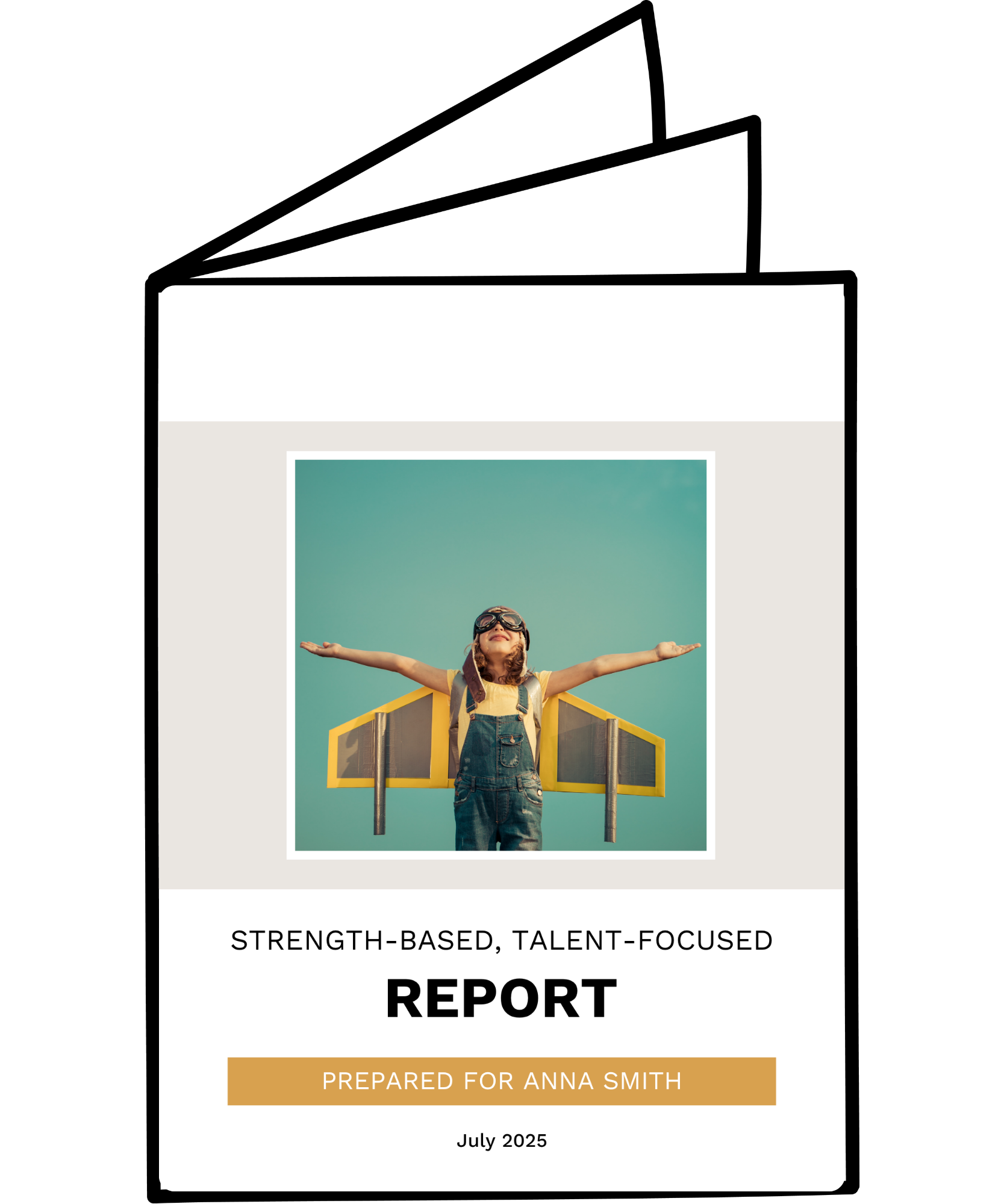It’s time for your child to be seen for what they can do.
A strength-based assessment uncovers your child’s talents, interests, and learning preferences, giving you practical insights to help them thrive at school and at home.
Many parents of neurodivergent children feel disheartened and frustrated when reading a diagnosis report. Most reports focus on what your child can’t do, giving you a view of their deficits rather than their potential.
The result?
➜ Your child feels misunderstood, frustrated, or ‘stupid.’
➜ You feel drained from fighting their corner.
➜ Teachers only see the struggles, not the spark.
A strength-based assessment reveals potential,
providing a full picture of your child and how they can flourish.
What is a strength based assessment?
Instead of cataloguing what’s “wrong,” we explore what makes your child tick.
We uncover:
➜ Strengths: where they shine and show potential
➜ Learning preferences: how they learn best
➜ Interests: what motivates and excites them
➜ Conditions for success: the environments where they thrive
This process is collaborative. You, your child, and optionally teachers can all contribute. You receive a fuller, truer picture of your child and the supports and adjustments they require for a positive, effective, and meaningful learning experience.
What you’ll receive
Personalised Family Report:
A rich portrait of your child’s strengths, interests, and learning preferences, helping you see what motivates them and how to nurture their growth at home and at school
School Toolkit:
A clear, actionable summary for teachers, highlighting what works, what to watch for, and how to create the conditions where your child can thrive in everyday classroom settings.
Strength-Based Pathways:
Tailored suggestions for activities and experiences that build on your child’s strengths, helping them grow confidence, connection, and a sense of belonging in and beyond school.
Full Circle Meeting:
A collaborative online meeting bringing together parents, and where possible, key adults such as your child’s teacher or SENDCo. Together, we identify small, meaningful steps that can make a big difference, ensuring everyone moves forward with clarity and shared purpose.
A strength-based assessment identifies the strengths of children who are struggling in school, and supports parents and teachers to create environments where they can thrive intellectually, socially, and emotionally.
Why It Helps
When a child’s strengths are recognised and understood, everything shifts: how they see themselves, how teachers respond, and how learning feels day to day. A strength-based assessment creates that shift by helping everyone work from possibility, not limitation.
It:
Empowers your child by recognising who they are and what they can do
Equips you to advocate effectively in school settings.
Gives teachers practical, easy-to-use strategies.
Helps you match activities and experiences outside of school to your child’s strengths and interests
Supports your child’s growth, not just the management of struggles
Together, these insights build confidence, understanding, and a shared language of support that lasts well beyond the report itself.
Next Steps
If you want to understand what helps your child to thrive, and get strategies that can be used straight away at school and at home,
book a call to discuss a strength-based assessment.
FAQs
-
The full assessment process costs £750, which includes all consultations, analysis, and the final written report with tailored recommendations for home and school.
-
Assessments are available for all students, aged 4–22.
-
Traditional assessments often focus on diagnosing difficulties or measuring deficits. A strength-based assessment shifts the focus to potential, exploring how your child learns, where they excel, and how their strengths can support areas of need.
-
No. A diagnosis isn’t required. Many families come because their child learns or behaves differently and they want a deeper understanding, whether or not they’ve gone through a diagnostic process.
-
That’s absolutely fine. We’ll review any existing information and use it to build a fuller picture of your child’s strengths and learning profile.
-
Yes. While it’s not a diagnostic report, it provides valuable context about your child’s learning profile, strengths, and needs. Many families share it with schools or use it to strengthen EHCP applications or reviews, as it helps educators understand how your child learns best and what approaches will help them thrive.
-
Yes, increasingly so. Schools are looking for practical, strength-based insights that complement formal assessments. The report is written in clear, professional language, making it easy for teachers and SENCOs to understand and apply.
-
All strength-based assessments are conducted online, making them accessible wherever you are in the UK. Sessions are held via secure video link, with flexibility to suit your child’s needs and comfort level.
-
That’s absolutely fine. Strength-based assessments work with any learning environment, whether your child is home-educated, in an alternative provision, or attending a specialist or independent setting. The focus is always on who your child is as a learner, not where they learn.
-
Most families complete the process within 3–4 weeks from the initial consultation to the final report.
-
Through questionnaires, conversations, and observation tools designed to capture a holistic view of your child’s learning profile, including what lights them up and what shuts them down. A full assessment will include a separate Zoom conversation with you, your child, and 2 to 3 adults in their lives, such as a teacher, family member or club facilitator.
-
Yes, student’s voices are central. Depending on age, they may complete short activities, reflect on their interests, or help identify times they feel most confident and capable.
-
That’s completely understandable, especially if they’ve had difficult experiences with assessments or school. We always aim to include your child’s voice and perspective, but never at the expense of their comfort. The session is flexible and child-led, with adjustments like keeping the camera off or shortening activities when needed. Most children find they enjoy the process once they realise it’s about what’s right with them, not what’s wrong.


